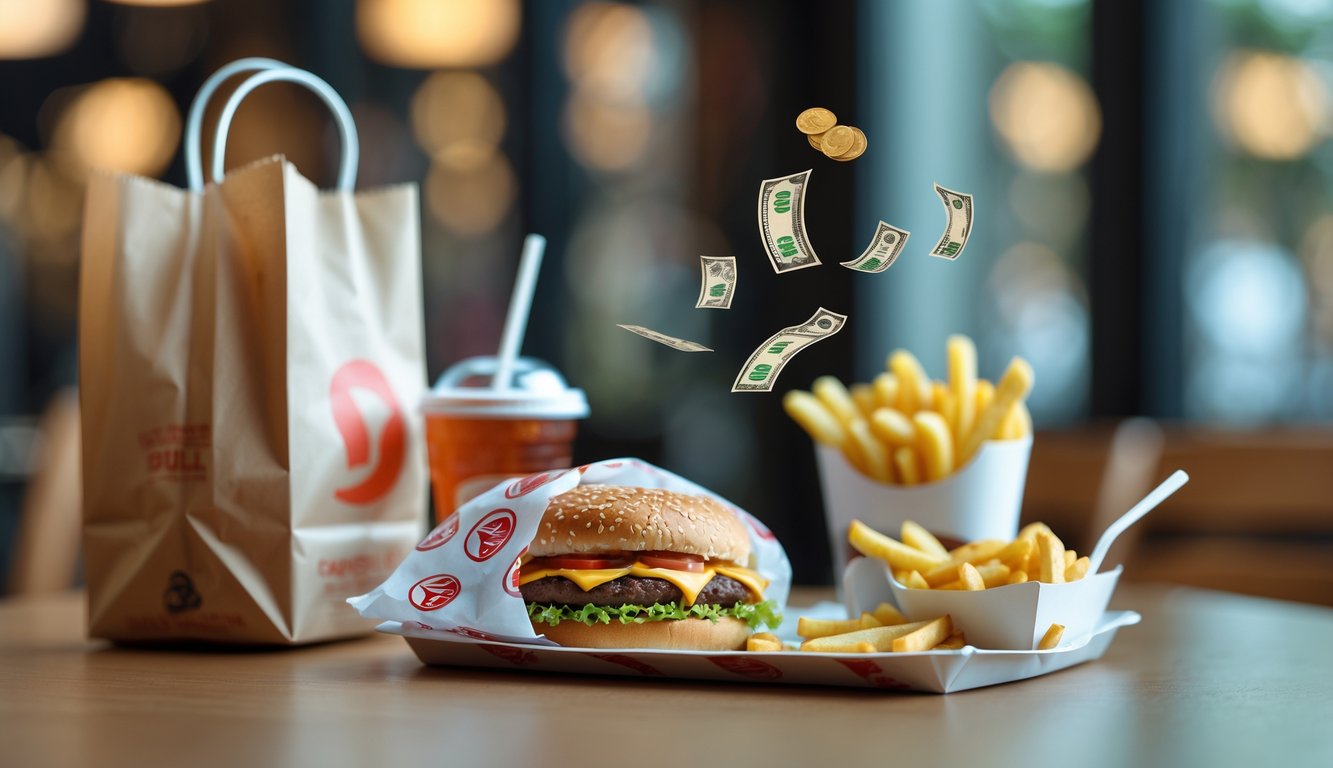
McDonald’s Price Adjustments
Bought two Egg McMuffins. Each one was ninety cents more on the app for “mobile convenience.” Store signs just had normal prices. I called customer support—yep, the rep admitted digital prices change based on demand, operating costs, and even your phone’s location. Creepy, but whatever. McDonald’s started testing this in big cities, raising prices on digital orders, sometimes just for breakfast hours.
Ray Kroc supposedly wanted “value for every customer,” but the app doesn’t care. I see prices jump 5–15% above drive-thru, especially during peak hours. University of Michigan (2023) broke it down: platform fees, packaging, eco-surcharges—all pop up at checkout.
Tap “Pay” and your $15 order is suddenly $19. Multiply that by millions of orders, and it’s a fortune. I’m not boycotting, but this is a shell game and everyone acts like it’s normal.
Wendy’s Strategies for Takeout Pricing
Wendy’s. I love the spicy nuggets, but online prices are always higher than walk-in. Saw some franchise CPA post on LinkedIn that Wendy’s bumps digital order prices by $0.20–$1.00 per entrée in cities. “Mobile exclusives” just mean higher baseline prices and “order bag fees” that appear after you swipe.
Biggie Bag: $7.19 online, $6.49 in person, even though the sign says “$5 Value.” Staff had no idea why. One teenager just shrugged and said, “That’s the app.” Food service auditors found Wendy’s sometimes tags on “infrastructure surcharges” to cover credit card or delivery fees, then quietly drops them when people complain.
It’s never consistent. If you look, there’s always some new mystery fee. Maybe confusion is the point. Every few weeks, something changes, disappears, or gets renamed—and my lunch keeps getting pricier, no matter what the ads say.
The Price of Convenience vs Cooking at Home
So, I’m still trying to figure out how grabbing a chicken sandwich at the drive-thru somehow feels cheaper than picking up a pack of chicken breasts at the store, but then, boom—my grocery receipt is suddenly a 16-digit number and I’m out of olive oil again. I don’t get it. Fast food is supposed to be cheap, but after delivery fees and all those random $5 “combo” add-ons, it’s like, what did I even just pay for? My lunch is $14 and I barely remember ordering it. Maybe I blacked out.
Comparing Home Cooking to Fast Food Takeout
Honestly, if I look at my bank app for the week, it’s just chaos. Pasta at home? Maybe $3 a serving if I ignore the hour I spent scrubbing sauce off the stove. Takeout pasta looks easier, but then I start adding toppings and suddenly it’s $12. Dr. Susan White, who’s apparently a nutrition economist (is that a real job?), claims homemade meals average $3.50 versus $8–$12 for fast food. Sure, but my kitchen looks like a tornado hit it every time I “save money.” And delivery fees? Surge pricing? Those “cheap” combos are a scam.
And if you’re single, honestly, sometimes fast food is less painful. But only if you pretend the soda and dessert don’t count. Which, let’s be real, nobody does. And dessert—why is it always the third order that gets me? Statistically, I’m doomed. “Convenience tax” sounds tiny until I add it up over a month and realize I could’ve bought a new blender with all the extra cash. Regret isn’t line-itemed on the receipt, but it’s there.
Processed Foods and Hidden Health Costs
Salt. It’s always the salt. I swear, every burger is a sodium grenade. My doctor once said, “Blood pressure meds are cheaper than heart surgery, but not by much if you’re eating fast food every day.” Good pep talk. And those so-called “healthy” salads at the drive-thru? The sugar in the dressing is basically two brownies. No one’s checking that at midnight when I’m stress-eating.
Processed stuff sneaks into everything. I checked the ingredients on a breakfast sandwich once—there were like nine words I couldn’t pronounce. Home cooking means I at least know what’s on my plate, even if it’s just “slightly burnt.” Lori Price (she’s a dietitian, big fan of guilt trips) told me, “Home-cooked food isn’t perfect, but you know what’s in it.” I mean, kind of? The urge to grab takeout never actually goes away. But when my pants feel tight, I remember that $4 burger is expensive in ways the app doesn’t warn you about.
The Impact of Hidden Costs on Customer Spending
I used to think grabbing a burger was a $6 thing. Ha. By the time the app’s done with me—random fees, “convenience” charges, whatever else—I’m out $12. Delivery is somehow pricier than eating in. Why? It’s the same food! I’m halfway through a nuggets order before realizing I’ve blown my food budget for the week.
Changing Spending Patterns
Everyone I know complains about “takeout regret,” and it’s not just the calories. Delivery apps promise deals, but that 2023 PYMNTS study says people pay almost double for delivery versus pickup. Why do I keep falling for this? My friend who manages a chain just grumbles about “third-party premiums.” Two burritos for $14? Nah, it’s $23 by the time the app’s done slicing you up with fees and tips.
And then there’s the shrinking portions. “Combo upgrades” are just a way to get me to spend more for less food. Sure, food costs are up—Mitchell Olsen (some retail guy, apparently) says higher wages mean higher prices. But I look at my $25 lunch and remember when it was $12. And I’m still hungry.
Budgeting for Fast Food Takeout
I tried to set a $40 takeout budget for the week. LOL. Delivery apps laughed in my face. My receipts are a jumble of “service” and “processing” fees, so guessing the real total before I hit “order” is like playing the lottery. Pre-tax? Doesn’t matter. There’s always another fee. I call it “receipt roulette.”
Sometimes I think walking in would be cheaper, but then there’s gas, time, and the fact that I’m already craving fries. Fast Company says bad service, missing items, and waiting around just drain your wallet even more. My only advice: check every line on your bill—there’s always a weird fee hiding in there. Still, I add fries for $1.99 every single time. No self-control.



